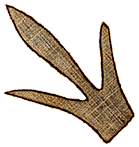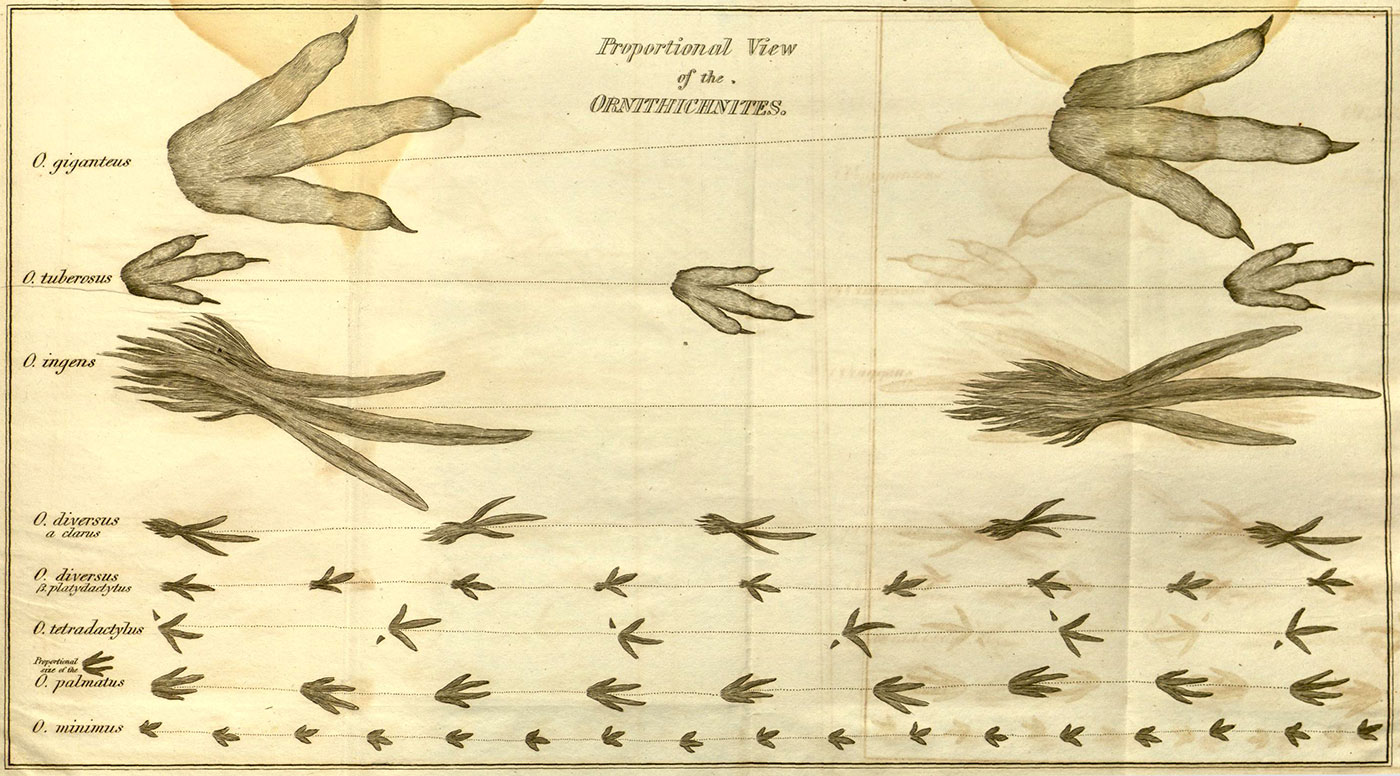 MENU
MENU
 MENU
MENU

Fossil tracks drawn by Orra and published in the American Journal of Science. Image courtesy of Archive.Org.
With their rediscovery in Greenfield in 1835, Edward began the first thorough scientific study of the "fossil bird tracks" that today are called dinosaur footprints. He created a taxonomy, categorizing each type of track according to length, breadth, and number of joints of the toe bones, and the overall shape of the print. He recorded how far apart the impressions were from side to side and how long the steps. He noted how complete each track was and whether the ground appeared to have been muddy or dry when the imprint was made.
He tried to imagine what the track makers had looked like. There were no pictures of dinosaurs to help him. The word dinosaur wasn't even invented until late in 1841, and that was in reference to skeletal remains found in Britain and Europe, not to footprints in America. "Would that those who come after me could know how great have been the difficulties I have encountered," he wrote later, "and how hard it has been to grope my way without guides through the thick darkness that has rested on this subject."
All Edward had to go on was his knowledge of modern-day zoology and comparing the footprints to the tracks of living animals. He referred to the work of the French scientist Georges Cuvier. Cuvier thought that if one characteristic was known, even if only from a bone, crucial information about the rest of the animal could be deduced. For example, if it had hooves, it would be a mammal, not a reptile, and would have teeth for grinding rather than tearing, and thus be vegetarian. Most of the footprints Hitchcock was examining had three toes ending in sharp little nails, much like those of a turkey, so the creatures must have been very large birds, hard as it was for him to believe, and he hypothesized that the sharp claw marks indicated that they ate meat.
Orra's was the first published illustration of the footprints, drawn from Edward's specimens. Her drawings of the footprints were directly from nature, whether she went out into the field or drew specimens that Edward brought home. He sometimes made his own illustrations by putting a piece of paper over a track and outlining it by feel, but he acknowledged that his wife's technique was far better, more accurate and giving a fuller sense of dimension.
Over nearly 30 years, Edward collected around 20,000 track specimens and described dozens of species of the "birds" that made them. Some tracks were given to him, some he bought from men working in quarries or farmers who found them in their fields. Some, he dug up himself. He was so self-conscious about his position as a professor that when he did his own digging, he would drive the cart back under cover of darkness, because he did not think it proper for a professor to be seen doing such dirty work!